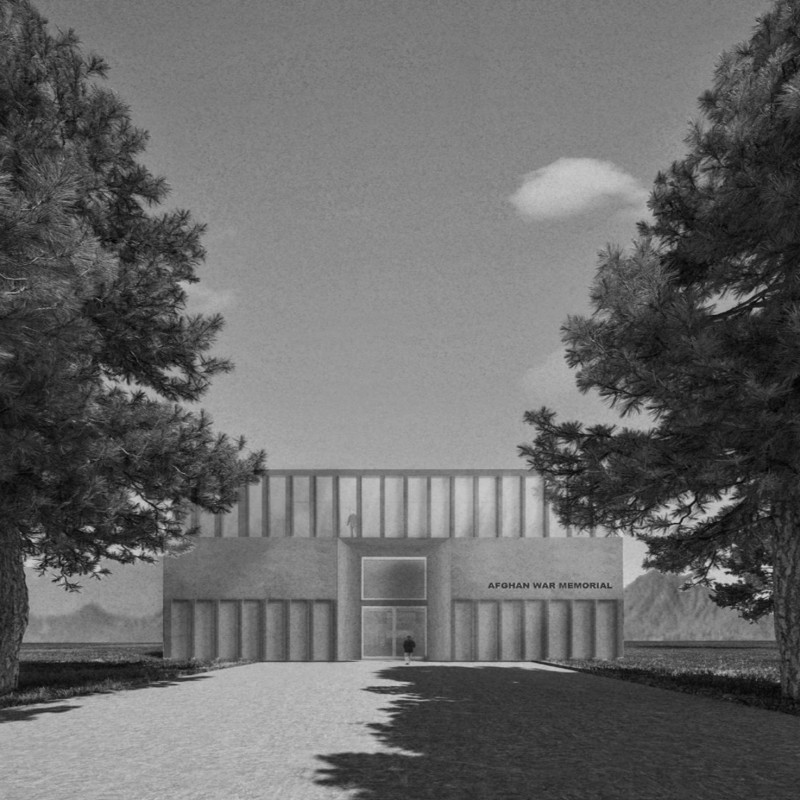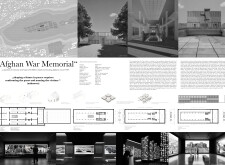5 key facts about this project
**Project Overview**
The Afghan War Memorial is located in Kabul's Wazir Akbar Khan diplomatic district, designed to honor the profound losses experienced by Afghan civilians since 1978. This memorial serves as a place for remembrance and contemplation, providing the public with an opportunity to engage with the historical narrative of conflict in the region while fostering aspirations for peace.
**Spatial Strategy and Experience**
The design emphasizes a thoughtfully arranged layout that encourages various modes of engagement. Visitors move through distinct zones, each promoting solitude, communal reflection, or educational interactions. Surrounding the memorial, the 21,100 m² landscaped gardens enhance connectivity to nature, fostering a contemplative atmosphere while symbolizing resilience and renewal through curated plant life. Interior spaces are dedicated to exhibitions, utilizing interactive elements to immerse visitors in compelling narratives of the Afghan experience during the war, thus enhancing emotional engagement and understanding.
**Material Considerations**
Material selection underscores both functionality and symbolic meaning. The use of concrete provides durability and stability, presenting a contemporary aesthetic reflective of the weight of history. Glass is incorporated to facilitate natural light, cultivating an environment of openness and hope. Steel elements reinforce structural integrity, while warm wood accents introduce a humanizing touch. Additionally, stone integrates elements of the local terrain, establishing a dialogue between the architectural form and the surrounding landscape. Together, these materials create a tactile experience that invites deeper emotional connections with the memorial's narrative.


















































